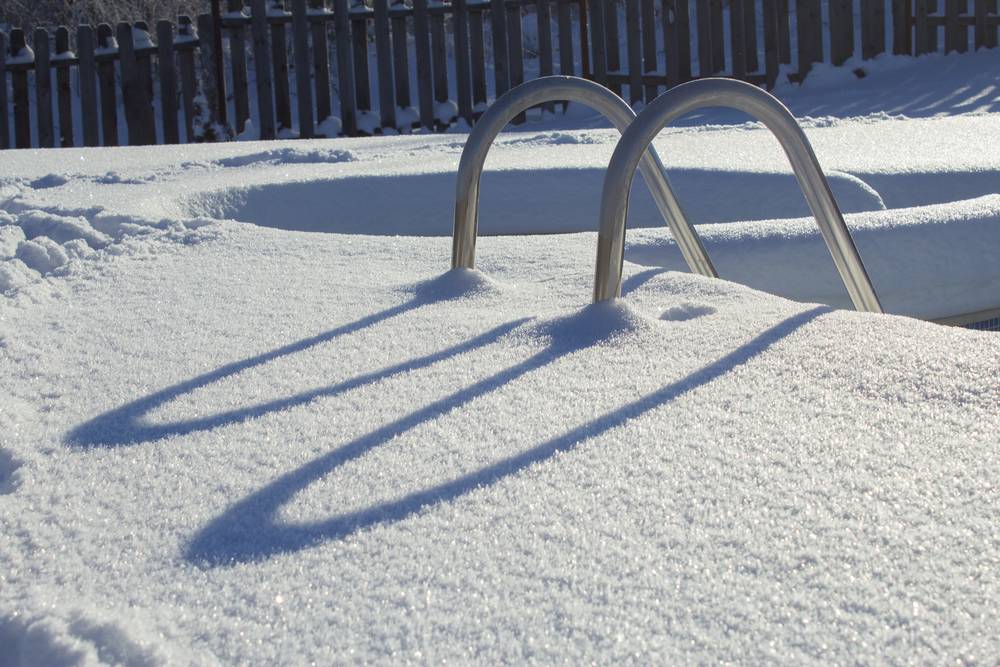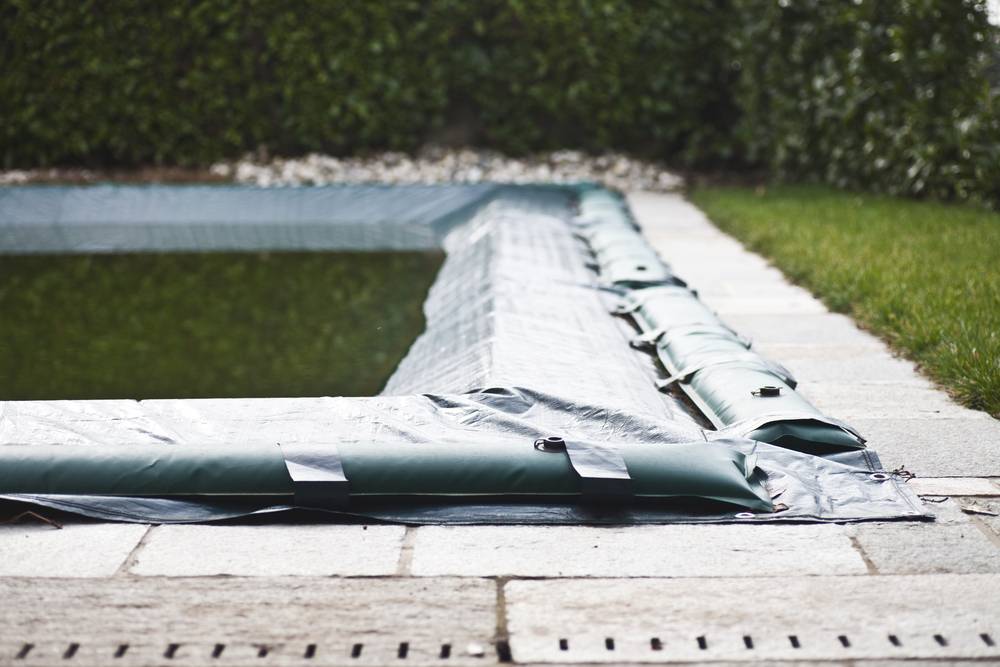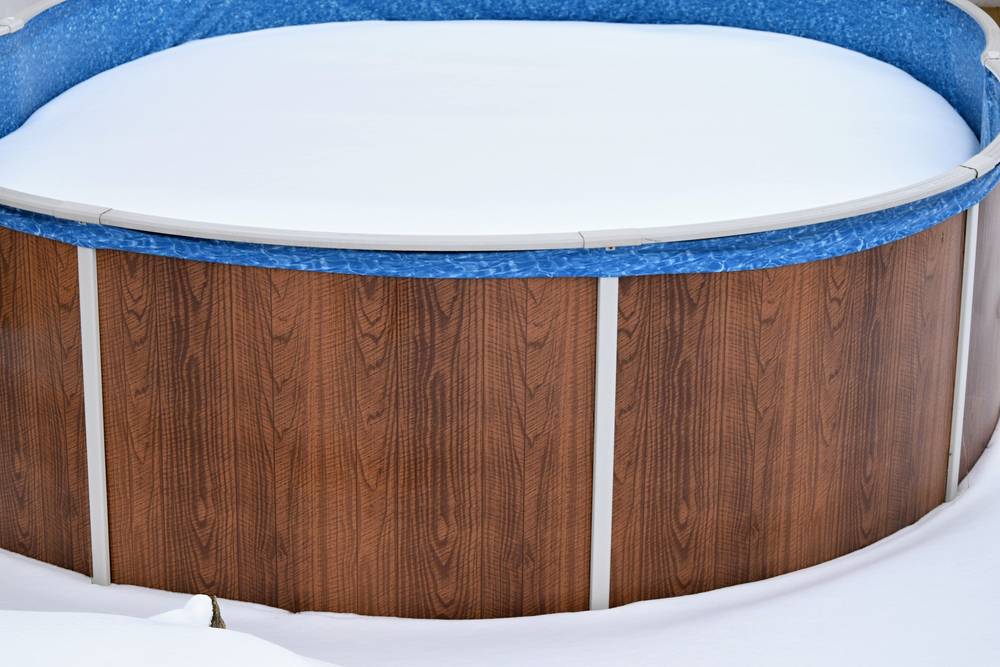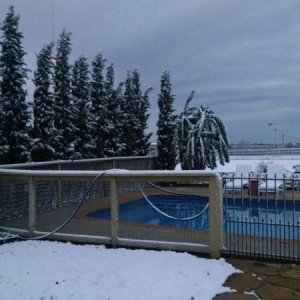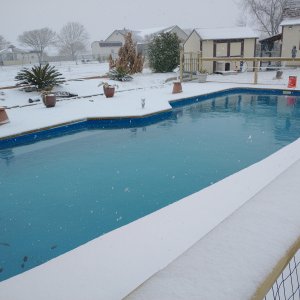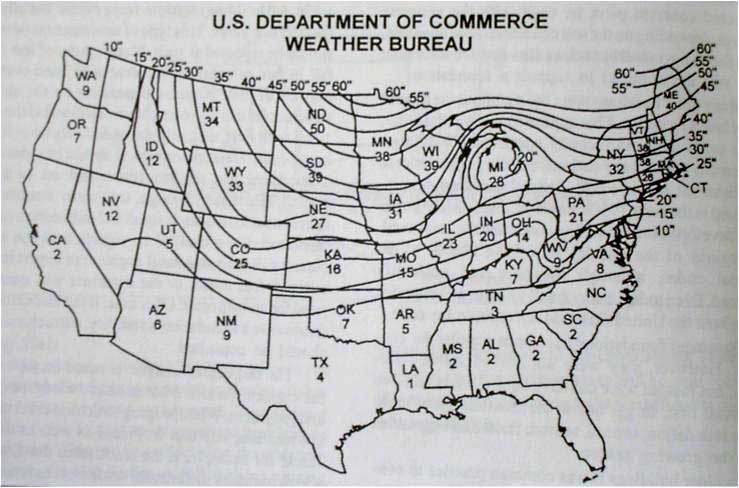Well, I think we made it through our first big freeze mostly unscathed. In some ways, I'm glad to have gone through this as I learned a lot. That said, I wish we could simply never have freezing temps again.
But alas, I'm trying to learn from this experience and prepare better for next time. Here is one issue that I've been pondering since the big event. I'm wondering if anyone has any insight on this.
Our approach this time was to keep pool equipment running (pool and spa are uncovered and open). This worked fairly well since we never lost power. By running the pool equipment constantly, we kept the pool temps evenly distributed throughout the water. This was great at the beginning when the original water temp was around 42 so the colder surface water got mixed in with the warmer water below and kept things from freezing.
But, as time went on, water temps went down. We got all the way down to 32 degrees in the water where things seemed to pin and stay pretty steady. At this point, I'm thinking that all of the water in the whole system (pool surface, bottom of pool, in the underground pipes, etc.) is now right on the verge of freezing. If we had lost power or equipment had frozen up at this point, it seems that it would be very easy for all the water to freeze pretty quickly. It seems this would be true even underground where it generally wouldn't get that cold, but we had brought the temps in that underground water down by running the equipment (maybe the warmth in the ground would continue to help at this point, but it just didn't seem great to have 32 degree water in the underground pipes).
So, one thing I thought that might mitigate the above would be to pre-heat the entire pool to 70+ degrees in advance of the weather moving in. I have read a few posts of people doing this and it seems to have helped keep their water temps well above freezing throughout the event. Obviously, there's a limit to this as, eventually, the water will get down to 32 degrees if the weather persists long enough, but it would certainly delay hitting the freezing point and allow the running equipment to have a positive effect of keeping warmer water flowing.
Another approach, though, is what is discussed in this thread - The Physics of Freezing and Freeze Protection - by @mas985
The thesis of that thread appears to be that running the pumps constantly during freeze events isn't the best approach (or at least not the only approach). Rather, if freezing weather is mild enough, you can just do nothing, and if it's more severe, you can drain the equipment and let the system go idle and open everything up enough to give the water room to expand as it freezes.
But my question to @mas985 or anyone else is -- are you saying this approach (drain the equipment and let it go idle -- without fully winterizing or blowing out the pipes) can work even through extreme weather events like what we just experienced? I see the logic in it, but I would also expect that would result in a whole bunch of frozen water -- across the entire pool surface, in the skimmer, in all pipes above ground and extending at least some amount underground, etc. Is the thesis of the above article intended for severe events like this one or just for more mild freezes?
But alas, I'm trying to learn from this experience and prepare better for next time. Here is one issue that I've been pondering since the big event. I'm wondering if anyone has any insight on this.
Our approach this time was to keep pool equipment running (pool and spa are uncovered and open). This worked fairly well since we never lost power. By running the pool equipment constantly, we kept the pool temps evenly distributed throughout the water. This was great at the beginning when the original water temp was around 42 so the colder surface water got mixed in with the warmer water below and kept things from freezing.
But, as time went on, water temps went down. We got all the way down to 32 degrees in the water where things seemed to pin and stay pretty steady. At this point, I'm thinking that all of the water in the whole system (pool surface, bottom of pool, in the underground pipes, etc.) is now right on the verge of freezing. If we had lost power or equipment had frozen up at this point, it seems that it would be very easy for all the water to freeze pretty quickly. It seems this would be true even underground where it generally wouldn't get that cold, but we had brought the temps in that underground water down by running the equipment (maybe the warmth in the ground would continue to help at this point, but it just didn't seem great to have 32 degree water in the underground pipes).
So, one thing I thought that might mitigate the above would be to pre-heat the entire pool to 70+ degrees in advance of the weather moving in. I have read a few posts of people doing this and it seems to have helped keep their water temps well above freezing throughout the event. Obviously, there's a limit to this as, eventually, the water will get down to 32 degrees if the weather persists long enough, but it would certainly delay hitting the freezing point and allow the running equipment to have a positive effect of keeping warmer water flowing.
Another approach, though, is what is discussed in this thread - The Physics of Freezing and Freeze Protection - by @mas985
The thesis of that thread appears to be that running the pumps constantly during freeze events isn't the best approach (or at least not the only approach). Rather, if freezing weather is mild enough, you can just do nothing, and if it's more severe, you can drain the equipment and let the system go idle and open everything up enough to give the water room to expand as it freezes.
But my question to @mas985 or anyone else is -- are you saying this approach (drain the equipment and let it go idle -- without fully winterizing or blowing out the pipes) can work even through extreme weather events like what we just experienced? I see the logic in it, but I would also expect that would result in a whole bunch of frozen water -- across the entire pool surface, in the skimmer, in all pipes above ground and extending at least some amount underground, etc. Is the thesis of the above article intended for severe events like this one or just for more mild freezes?


